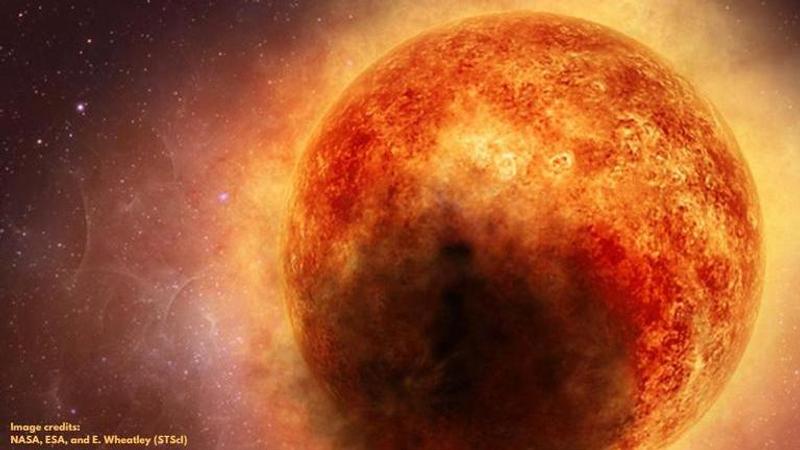Published 20:14 IST, August 14th 2020
Betelgeuse's sudden dimming uncovered by NASA's Hubble Space Telescope
NASA's Hubble Space Telescope has finally uncovered the real reason behind Betelgeuse's strange and mysterious dimming. Continue reading for full details.

Researchers who have been observing the Betelgeuse were left confused when the massive star began dimming mysteriously. A recent observation by NASA's Hubble Space Telescope now indicates that Betelgeuse's sudden dimming was a result of a huge amount of hot substance that the massive star released into space. This ultimately created a dust cloud that blocked starlight coming from Betelgeuse's surface.
The Hubble Space observations were led by Andrea Dupree, associate director of the Center for Astrophysics, Harvard & Smithsonian (CfA), Cambridge, Massachusetts.
“With Hubble, we see the material as it left the star’s visible surface and moved out through the atmosphere, before the dust formed that caused the star to appear to dim. We could see the effect of a dense, hot region in the southeast part of the star moving outward," Dupree said.
"This material was two to four times more luminous than the star's normal brightness," she continued. "And then, about a month later, the south part of Betelgeuse dimmed conspicuously as the star grew fainter. We think it is possible that a dark cloud resulted from the outflow that Hubble detected. Only Hubble gives us this evidence that led up to the dimming."
When did the dimming occur?
The dimming happened when researchers were trying to observe the red star using a telescope, which gave them the opportunity to examine as to why it started to lose its light. Betelgeuse is a gigantic star which is about 11 times bigger than the sun and has a huge volume as well. It expands on a 420-Earth-day cycle.
However, its current bloated situation is a sign that the star is approaching its end, which is said to take shape of an intense supernova explosion. The red star started to lose its brightness at a rapid pace during the fall of 2019 where it had lost close to two-thirds of its light by the month of February. The sudden change in its appearance led many to believe that the star will soon meet its demise.
And while that seemed imminent at the time, it did not happen. The giant red star was able to make it through the dimming affair and regain its original light by May 2020. The whole episode certainly raised questions and speculations around the main reason behind the dimming cause. At the time, certain experts said that it could be due to the doldrums to a dust cloud that blocks the lighting, and while others attributed it to the massive starspots on the surface of the star.
The new study supports the dust hypothesis which was held by the former group of experts, although it claims that the red star released the cloud itself. Scientists studied the Betelgeuse this year and in 2019 with the help of NASA's Hubble Space Telescope. The observations that were carried out through late 2019 indicated that there have been massive amounts of material seen moving from the surface of the red star to its external atmosphere at colossal speeds. Nonetheless, there will be a time when the Betelgeuse finally collapses under its own weight, resulting in a supernova, although the time may not be near.
"No one knows what a star does right before it goes supernova, because it's never been observed," Dupree explained. "Astronomers have sampled stars maybe a year ahead of them going supernova, but not within days or weeks before it happened. But the chance of the star going supernova anytime soon is pretty small."
Image credits: NASA, ESA, and E. Wheatley (STScI)
Updated 20:15 IST, August 14th 2020



